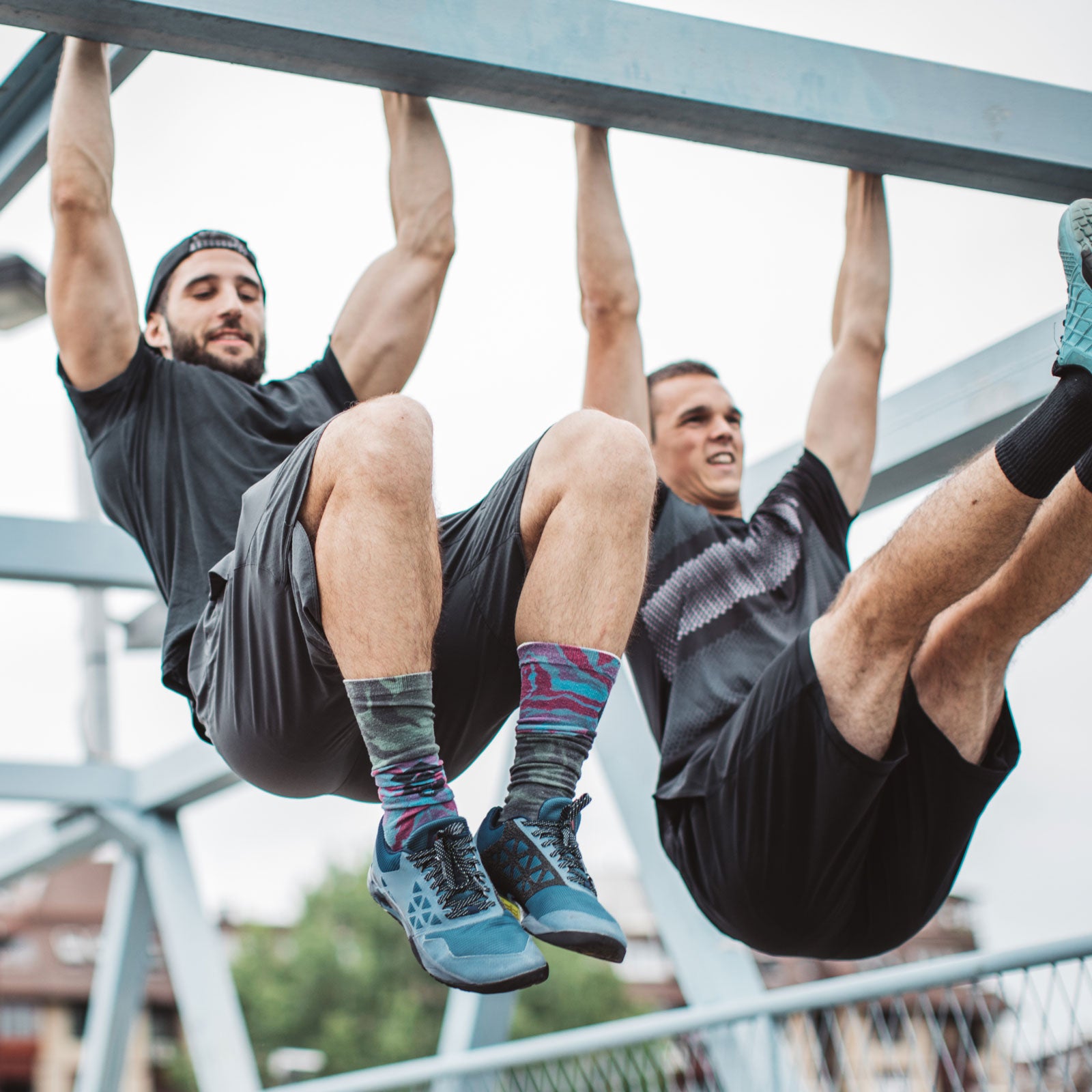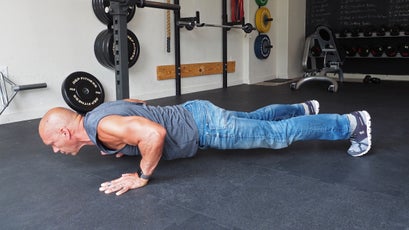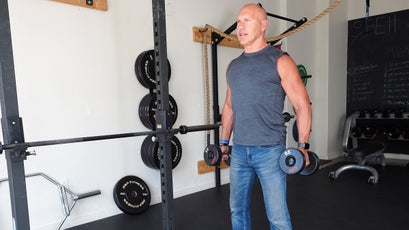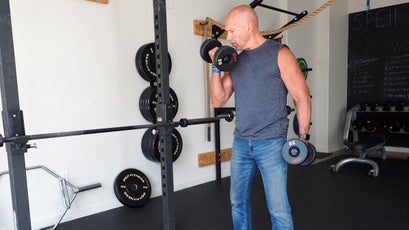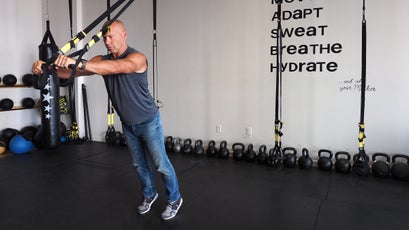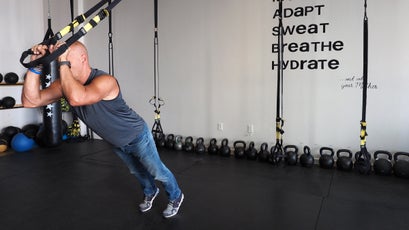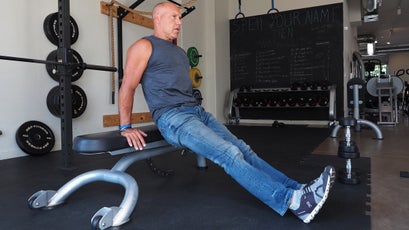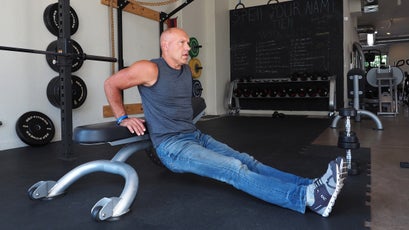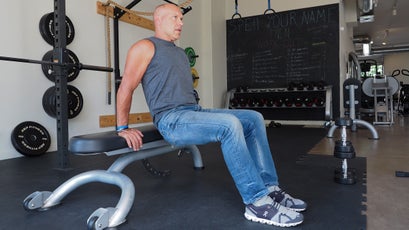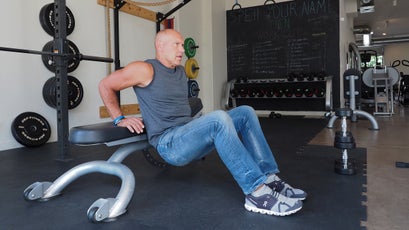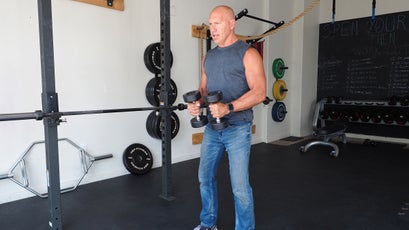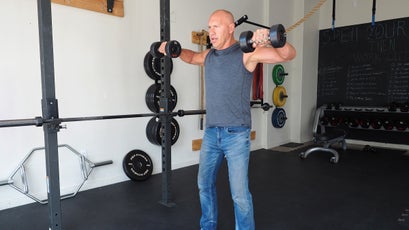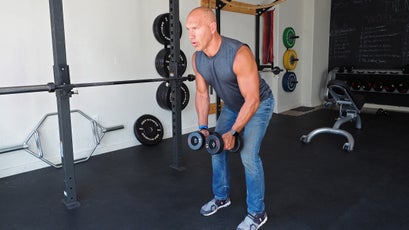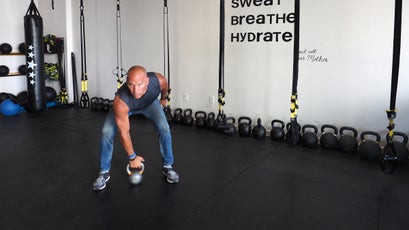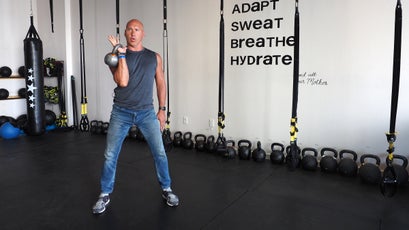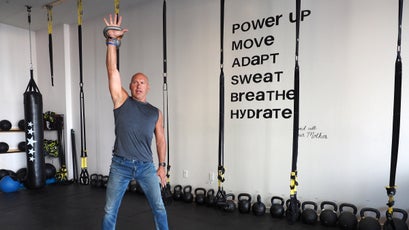Whether you pull through cruxes, paddle against tides, or hike with trekking poles, arm strength is essential for forward movement. Even for leggy sports like running, hiking, and biking, a strong upper body provides balance, efficiency, and resilience against injury.
If youÔÇÖre hoping to build upper-body strength, incorporate these seven exercises into your workout routine.┬áThe moves, recommended by Doug Lawder, a personal trainer of 27 years and the owner of in Santa Fe,┬átarget the armsÔÇÖ major muscle groupsÔÇöthe biceps, triceps, and deltoids (shoulders)ÔÇöas well as┬átheir many smaller, stabilizing muscles.
Mix them into your existing routine, or complete the workout on its own as a circuit, moving from one exercise to the next, with a minute or two of rest between each exercise and five minutes of rest between each set. For the first round, do each exercise for 30 to 60 seconds, using lighter weights (if applicable) and a moderate range of motion to increase your heart rate, get the blood pumping, and warm up your joints and muscles. Then do two to three more sets of 10 to 15 reps with a full range of motion. Focus on form and control rather than the number of reps.
For each exercise, keep your core engaged to protect your spine, and pay attention to your breathing. Inhale during the eccentric muscle phase (when your muscles elongate under load), and exhale during the concentric phase (when your muscles contract under load). For example, when doing a push-up, breathe in when you lower yourself and breathe out when you push back up.
Arm Strengthening Exercises
Strict (Military) Push-Up
What it does: Primarily targets the chest and triceps and also strengthens the shoulders, biceps, and core muscles.
How to do it: Start in a high-plank position,┬áwith your hands shoulder-width apart and your arms fully extendedÔÇöhands, elbows, and shoulders all in line. Keep your feet together or no more than 12 inches apart. Engage your core muscles to keep your body in a straight line from head to heels. From here, bend your elbowsÔÇökeep them tracking back alongside your body to better target the tricepsÔÇöto lower your chest to slightly below the level of your bent elbow. Then push back up to the high-plank position┬áfor one repetition. Keep your spine neutral (no sagging or arching the back or the butt) and your hips level throughout the movement.
Reps: 10 to 15
Dumbbell Curl
What it does: Primarily targets the biceps and also strengthens muscles in the forearms and shoulders.
How to do it: Hold a dumbbell in each hand, with your arms at your sides, palms facing in. Stand tall, with your shoulders back and down and your core engaged. One arm at a time, slowly lift the weight, rotate your wrist 90 degrees to the outside, and continue curling the dumbbell all the way to your shoulder to flex the elbow joint through its full range of motion. Pause for a second, then slowly reverse the movement to the starting position for one repetition. Repeat on the other arm, and alternate sides every rep.
Complete each curl with control, and maintain an upright and still torso (donÔÇÖt let momentum aid the movement). Swaying back and forth every rep or dipping your shoulders are signs that the weight is too heavy for your biceps in isolation, so nontarget muscle groups are activating to compensate.
Reps: 10 to 15 on each side
Triceps Extension
What it does: Targets the triceps in isolation while training strength and stability in the shoulders and core.
How to do it: You can do this move using either a TRX suspension system ┤ă░¨╠řresistance bands.┬áIf youÔÇÖre using TRX, adjust the straps to midlength so the handles are between hip and chest height. Grab the handles, palms down, and stand beneath the anchor point with your feet hip-width apart. Straighten your arms, and hold them parallel to the floor at chest height. Then lean forward into the straps, and shift your weight onto your toes (your body should be tilted forward between 30 and 45 degrees). This is the starting position. From here, bend your elbows to lower your body as far as you can comfortably go. Press with the triceps to straighten your elbows, and return to the starting position for one repetition. Keep your shoulders still and your body in a straight line┬áfrom heel to head throughout the movement to isolate the triceps.
Make it more difficult by stepping back or lowering the handles to increase the angle of your body relative to the floor.
If you donÔÇÖt have access to a TRX suspension system, loop a resistance band┬áaround a high, sturdy object, such as a pull-up bar, and grip an end in each hand. Step backward to increase tension in the band (the farther, the more difficult), and hold your elbows at your sides, bent to 90 degrees. Engage your core, tilt your body forward slightly so your weight is on your toes, then slowly extend your elbows until theyÔÇÖre straight. Slowly reverse the movement to the starting position for one repetition. Keep your shoulders still throughout the movement to isolate the triceps (only your forearms should move, hinging from the elbow).
Increase the resistance by stepping back farther or moving up to a heavier band.
Reps: 10 to 15
Bench (Triceps) Dips
What they do: Primarily target the triceps and also strengthens the shoulders, chest, and back.
How to do them: Sit on a sturdy bench, and grip the front edge with your palms down and your fingers facing forward. Either place your heels on the floor with your legs straight out in front of you (harder) or your feet flat with your knees bent (easier). Engage your core, and press down through your palms to lift your tailbone off the bench. Shift your weight forward slightly to clear the benchÔÇÖs lip, then bend your elbows to slowly lower your body until your elbows are bent to around 90 degrees┬áor as far as you can go comfortably. Push back up with your triceps until your arms are straight┬áfor one repetition. Repeat.
Make it more challenging by raising your feet on a box or an exercise ball (this requires more core activation for stability), or have a friend place a plate weight in your lap. Eventually, build up to doing full dips on parallel bars, gymnastic rings, or suspension straps with your feet off the ground.
Reps: 10 to 15
Dumbbell Shoulder Fly (Lateral Raise)
What it does: Primarily targets the middle of the shoulders (lateral deltoids) and also works the upper back.
How to do it: Hold a dumbbell in each hand, with your arms at your sides, palms facing in. Stand tall, with your shoulders back and down, your core engaged, and your feet hip-width apart. With straight arms, slowly raise both weights out to each side until they reach shoulder height and your arms form a straight line. Slowly lower them back to your sides for one repetition.
Reps: 10 to 15
Dumbbell Shoulder Fly (Posterior Raise)
What it does: Primarily targets the back of the shoulders (posterior deltoids) and also works the upper back.
How to do it: Perform this variation like the lateral raise, above, but from a bent-over position so it targets the back instead of the sides of your shoulders (this also strengthens the upper back). Enter a quarter squat, and tilt your torso forward so itÔÇÖs nearly horizontal. Dangle the dumbbells with straight arms in front of you, centered and together, then with a slight bend in your elbows, slowly raise the weights out to the side until they reach shoulder height. Slowly lower them back to center for one repetition. Keep your core tight, your back flat, and your shoulders level throughout the movement.
Reps: 10 to 15
Kettlebell Overhead Press
What it does: Primarily targets the front of the shoulders (anterior deltoids) and also strengthens the triceps and upper back.
How to do it: Stand tall, with your shoulders back and down, your core engaged, and your feet hip-width apart. Hold a kettlebell, palm facing forward, at shoulder level (one side at a time). Slowly press the kettlebell directly up until your arm is fully extended,┬áthen slowly lower it to the starting position at your shoulder for one repetition. Your forearm, wrist, and hand should all remain in line and vertical throughout the movement. Be mindful to keep your shoulders levelÔÇöif they dip to one side, the weight is likely too heavy for you.
Reps: 10 to 15 on each side


